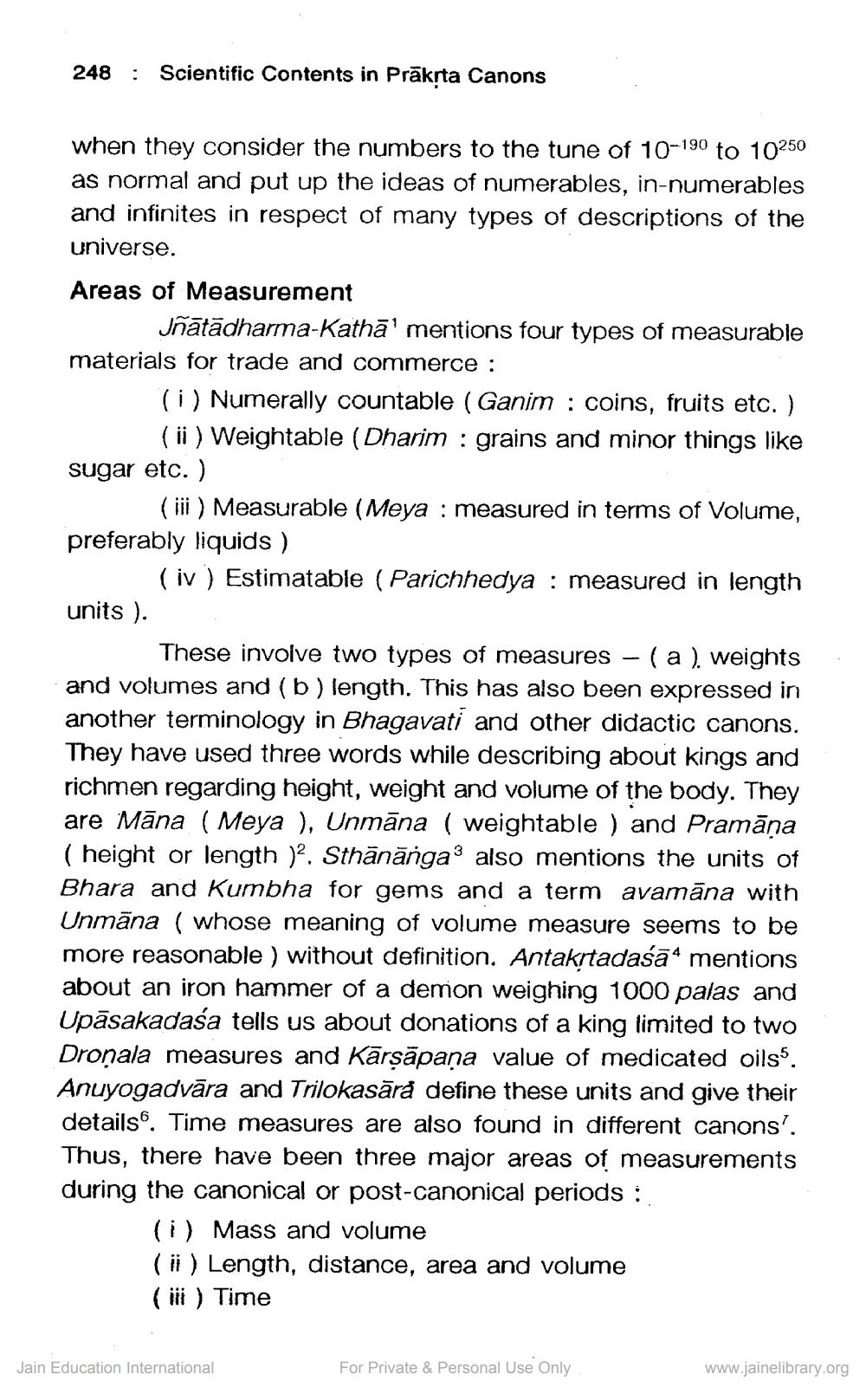________________
248 : Scientific Contents in Prākṣta Canons
when they consider the numbers to the tune of 10-190 to 10250 as normal and put up the ideas of numerables, in-numerables and infinites in respect of many types of descriptions of the universe. Areas of Measurement
jñātādharma-Kathā' mentions four types of measurable materials for trade and commerce :
(i) Numerally countable (Ganim : coins, fruits etc.)
(ii) Weightable (Dharim : grains and minor things like sugar etc.)
(iii) Measurable (Meya : measured in terms of Volume, preferably liquids )
(iv) Estimatable (Parichhedya : measured in length units ).
These involve two types of measures - (a) weights and volumes and (b) length. This has also been expressed in another terminology in Bhagavati and other didactic canons. They have used three words while describing about kings and richmen regarding height, weight and volume of the body. They are Māna (Meya ), Unmāna ( weightable ) and Pramāna (height or length )2. Sthānāngao also mentions the units of Bhara and Kumbha for gems and a term avamāna with Unmāna ( whose meaning of volume measure seems to be more reasonable ) without definition. Antakrtadasāo mentions about an iron hammer of a demon weighing 1000 palas and Upāsakadaśa tells us about donations of a king limited to two Dronala measures and Kārsāpaņa value of medicated oilss. Anuyogadvāra and Trilokasāra define these units and give their details 6. Time measures are also found in different canons'. Thus, there have been three major areas of measurements during the canonical or post-canonical periods :
(i) Mass and volume (i) Length, distance, area and volume (iii) Time
Jain Education International
For Private & Personal Use Only
www.jainelibrary.org




